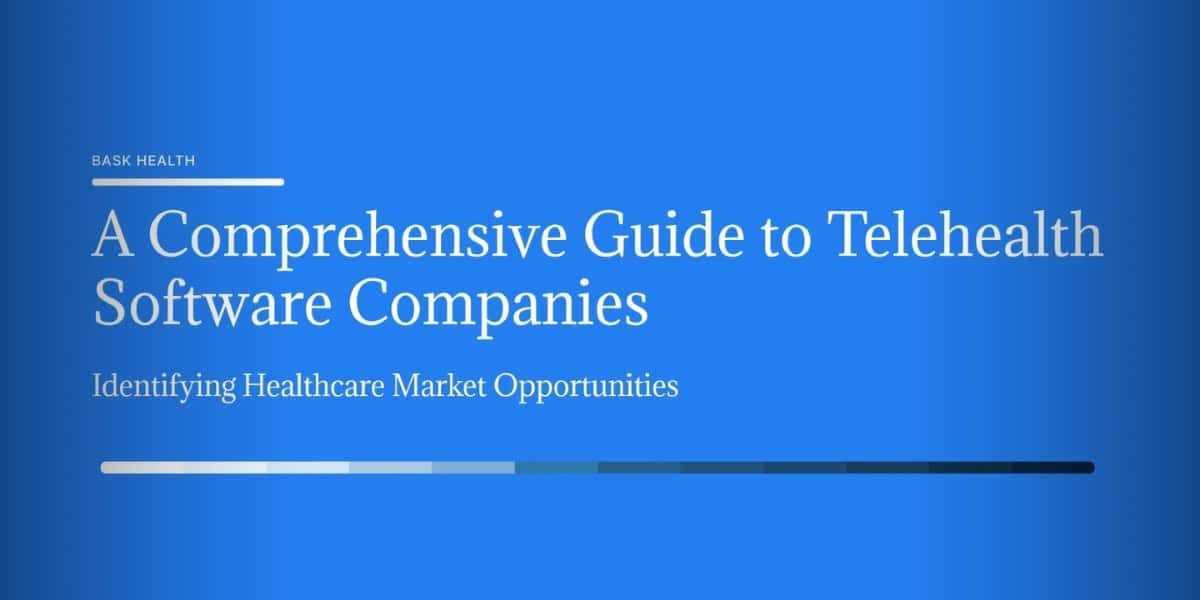The telehealth revolution has redefined healthcare, connecting patients and providers through innovative software solutions. Telehealth visits surged during the pandemic, creating a demand for platforms that go beyond simple video calls. This guide explores the leading telehealth software companies, their features, and what organizations should consider when adopting virtual care technology.
Leading Telehealth Software Companies
Telehealth software companies range from established providers to niche-focused startups, each pushing boundaries to enhance virtual healthcare.
Premier Enterprise Telehealth Providers
- Teladoc Health: With a global network spanning 175 countries, Teladoc pilots in primary care and mental health services, achieving $2.4 billion in revenue in 2022.
- Amwell: A key player delivering virtual care for hospitals and insurers, Amwell excels in enterprise integration.
- MDLIVE: Specializes in on-demand care with a network of board-certified doctors.
Specialized Telehealth Solutions
- Talkspace: Dominates the mental health space with over a million users.
- PlushCare: Offers same-day virtual primary care appointments.
- Strive Health: Focused on managing kidney disease with innovative tools.
Emerging Telehealth Startups
- 98point6: An AI-powered text-based platform reshaping primary care.
- Sword Health: Pioneers digital, physical therapy using AI-driven diagnostics.
- Maven Clinic: This clinic specializes in women’s and family health and is backed by significant funding.
Core Features and Capabilities
Modern telehealth platforms are far more advanced than basic video conferencing tools.
Virtual Visit Platforms
- High-definition video consultations with HIPAA compliance.
- Integrated waiting rooms and automated notifications.
- Device-agnostic access supporting desktops and mobile devices.
Remote Patient Monitoring Tools
- Tracks vital signs, chronic disease metrics, and behavioral health data.
- Provides real-time alerts for proactive intervention.
Practice Management Integration
- Seamless integration with EHR systems for efficient workflows.
- Automated appointment scheduling and billing systems.
Security and Compliance Standards
Security is a cornerstone of telehealth platforms, ensuring patient data remains private and protected.
HIPAA Compliance Requirements
- Secure communication protocols and regular risk assessments.
- Staff training on privacy protocols and patient consent documentation.
Data Protection Measures
- End-to-end encryption and multi-factor authentication.
- Secure storage solutions to prevent unauthorized access.
Implementation and Integration
Healthcare organizations must carefully plan telehealth implementation to maximize efficiency and effectiveness.
EHR System Integration
- Real-time data exchange for seamless workflows.
- Compatibility with existing systems to avoid duplication and inefficiencies.
Staff Training Requirements
- Comprehensive training on platform use, troubleshooting, and virtual care protocols.
Technical Infrastructure Needs
- High-speed connectivity and secure data systems.
- Backup protocols to ensure continuity during technical failures.
Pricing and ROI Considerations
Understanding costs and potential returns is crucial for healthcare organizations adopting telehealth solutions.
Pricing Models Comparison
- Subscription plans ($25–$300/month) suit small practices.
- Enterprise solutions ($350+/month) offer robust features for larger systems.
Total Cost of Ownership
- Initial setup: $5,000–$15,000.
- System integration: $20,000–$50,000.
- Maintenance and support: $15,000–$40,000 annually.
Return on Investment Metrics
- Reduced emergency visits and hospital readmissions.
- Improved patient retention and expanded care access.
Conclusion
Telehealth software companies are transforming healthcare by providing secure, feature-rich platforms that enhance access and efficiency. From industry leaders like Teladoc to innovative startups like Sword Health, these companies are reshaping the future of medical care. By prioritizing security, seamless integration, and ROI, healthcare organizations can harness the power of telehealth to deliver exceptional care in the digital age.
Discover how telehealth is transforming healthcare delivery! Dive into A Comprehensive Guide to Telehealth Software Companies to explore premier providers, key features, and how virtual care platforms are shaping the future of medicine. Don’t miss out—read now!
Published by Iris S.









